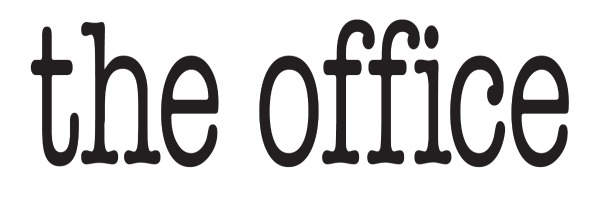

- #Microsoft office logo font software#
- #Microsoft office logo font series#
- #Microsoft office logo font windows#
It would become Microsoft’s most widespread and enduring brand, enjoying a 25-year run whose only updates included the addition of several taglines in 20. Due to the triangular sliver carved from its side, employees would affectionately dub this as the “Pac Man Logo”. The use of a much bolder, title-cased wordmark represented the most notable departure from previous logos. The new logo, in Helvetica italic typeface, has a slash between the “o” and “s” to emphasize the “soft” part of the name and convey motion and speed.” “The former logo (the ‘Blibbet’) was more in keeping with how we saw our company five years ago. In his own words, Scott sheds some light on his inspiration:

In-house designer Scott Baker is tasked with an ambitious rebranding effort to represent a new era in computing and a rapid shift in the company’s goals and vision.
#Microsoft office logo font windows#
The 80s are drawing to a close and Windows has become a global force. According to lead engineer Larry Osterman, there was even a Blibbet Burger which was served on Microsoft’s campus, along with a campaign spearheaded by employee (and current CTO) Dave Norris to “Save the Blibbet” when a new logo was proposed in 1987.ĭespite its popularity and brand loyalty amongst insiders, the blibbet would become a small, yet quaint footnote in the company’s branding history. The blibbet would also serve as a standalone logo, used as a watermark on company stationery and becoming a cult phenomenon among employees and alumni. This logo would become the face of Microsoft’s flagship Windows operating system.
#Microsoft office logo font series#
The letter “O” is carved from a series of parallel lines - an icon which is nicknamed the “blibbet” by employees. Seeking a more modern image suitable for mass consumption, the wordmark is distilled into a solid, geometric sans-serif font. From this point onward, Microsoft would use more classic typography. While many people did approve the new look, this logo would last for only 2 years. With it sharp edges, diagonal lines and exaggerated stems on the letters M, R and F, one could be forgiven for believing that the company was making heavy metal records as opposed to software. In an effort to remain visually relevant and appeal to this emerging market, a brand new logo with a decidedly bold look is created. It’s a new decade and Microsoft has formed a lucrative partnership with IBM, becoming increasingly popular among a new generation of computer hobbyists and programmers. Concentric lines and rounded edges form an all caps wordmark influenced by a disco aesthetic - timely for its era but ultimately destined for change. The partners would use a programming language to generate their first corporate logo. The company’s first logo was created by none other than Bill Gates and cofounder Paul Allen. As creators of the ubiquitous Windows operating system and its suite of Office applications, the company has formed a consistent and critical part of how people manage their content and run their businesses, leading to exponential success and a striking evolution of their brand.
#Microsoft office logo font software#
So, this is a well-tested, albeit roundabout way to know the file type of any installed font.Since 1975, Microsoft has built itself into the most prolific software company in the world.


 0 kommentar(er)
0 kommentar(er)
